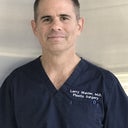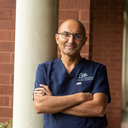Posted underEyelid Surgery q&a
Does a patient need to be awake to open and close the eyes to judge the effect for the Upper Eyelid Surgery?
According to what I read a person has to be awake to open and close the eyes as it is essential that the patient can open and close the eyes to judge the effect of the surgery. (Keep awake with a local anesthesia) Is open and closing the eyes necessary for the upper eyelid surgery?
Answers (12)
From board-certified doctors and trusted medical professionals
Dr. Laurence Weider, MD
Dr. Laurence Weider, MD
Board Certified Plastic Surgeon
Answer
Dr. Kenneth D. Steinsapir, MD

Dr. Kenneth D. Steinsapir, MD
Oculoplastic Surgeon, Board Certified in Ophthalmology
Answer
Dr. Andrew Campbell, MD

Dr. Andrew Campbell, MD
Board Certified Facial Plastic Surgeon
Answer
Dr. Tanveer Janjua, MD

Dr. Tanveer Janjua, MD
Board Certified Facial Plastic Surgeon
Answer
Dr. James Shire, MD

Dr. James Shire, MD
Board Certified Facial Plastic Surgeon
Answer
Dr. Jeffrey M. Darrow, MD

Dr. Jeffrey M. Darrow, MD
Board Certified Plastic Surgeon
Answer
Dr. Jane M. Rowley, MD

Dr. Jane M. Rowley, MD
Board Certified Plastic Surgeon
Answer
Dr. William Portuese, MD
Dr. William Portuese, MD
Board Certified Facial Plastic Surgeon
Answer
Dr. Michael H. Wojtanowski, MD
Dr. Michael H. Wojtanowski, MD
Board Certified Plastic Surgeon
Answer
Dr. David A. Sieber, MD, FACS
Dr. David A. Sieber, MD, FACS
Board Certified Plastic Surgeon
Answer
More Eyelid Surgery Questions
See all Eyelid Surgery Q&AWE SEND PRETTY
EMAILS
What’s trending? Who’s turning heads? Which TikTok myths need busting? We’ve got you. No fluff, no gatekeeping—just real talk. Get our free, unfiltered newsletter.